Pros and Cons
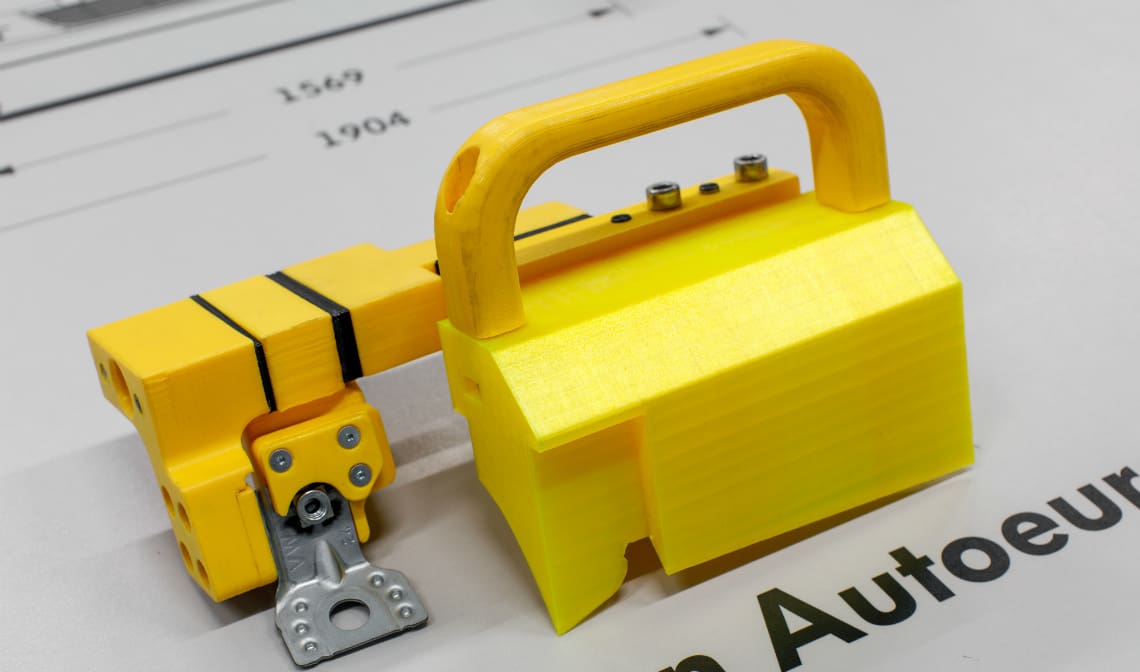
These days, 3D printing technologies are advanced enough to enable both prototyping and the production of parts made of high-performance materials.
One of the biggest benefits 3D printing brings to car manufacturers is the ability to cut costs and time needed for producing prototypes.
Exclusive, high-end manufacturers which produce a small number of cars have the luxury of 3D printing high-end, end-use parts. For manufacturers like Bugatti & Koenigsegg, 3D printing can cut costs for prototyping and enable exclusivity to be added to their cars.
While it makes sense to 3D print some high-end end-use parts, it just isn’t cost effective on a large scale. This is why you won’t find high-end 3D printed parts in mass-produced cars.
However, 3D printing can still serve as a great mass customization tool for lower-end manufacturers.
Let’s dive straight into some of the best automotive 3D printing applications the world has ever seen.
Koenigsegg's Prototype
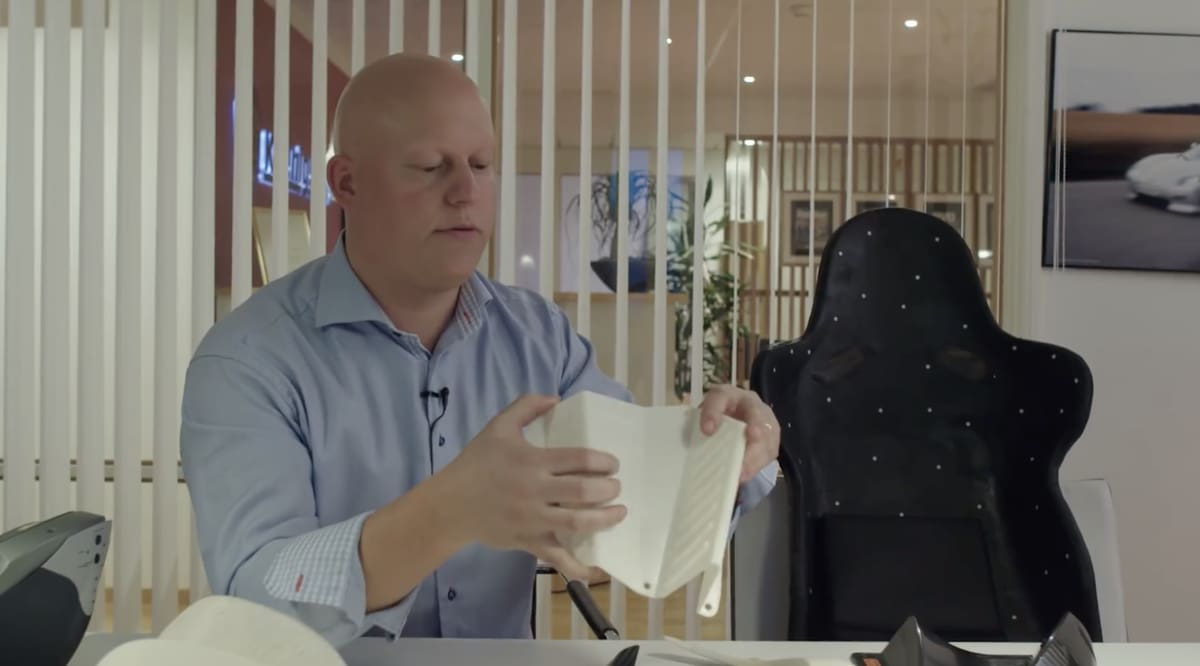
Swedish hypercar manufacturer Koenigsegg is famous for producing the world’s fastest road legal car, the One:1. The car’s name suggests that the amount of bhp (brake horsepower) is more or less the same as the car’s weight, 1360 kg and 1341 bhp, respectively.
Because such a car is produced in low volume, Koenigsegg is able to use metal 3D printing for the production of a lightweight titanium exhaust tip. Christian Von Koenigsegg, the founder & CEO of Koenigsegg, claims the 3D printing process is more expensive. However, saving weight is the company’s biggest priority so that’s why metal 3D printing was the way to go.
Koenigsegg also uses 3D printing for prototyping. They developed the brake and gas pedal, wing mirror arms and wing mirror housings, leg rests and many more of the components for the One:1 using 3D printing.
For a small low volume company like Koenigsegg, 3D printing is a great way to achieve faster product development. It also provides exclusivity to the end product.
Bugatti's Titanium Brake Caliper
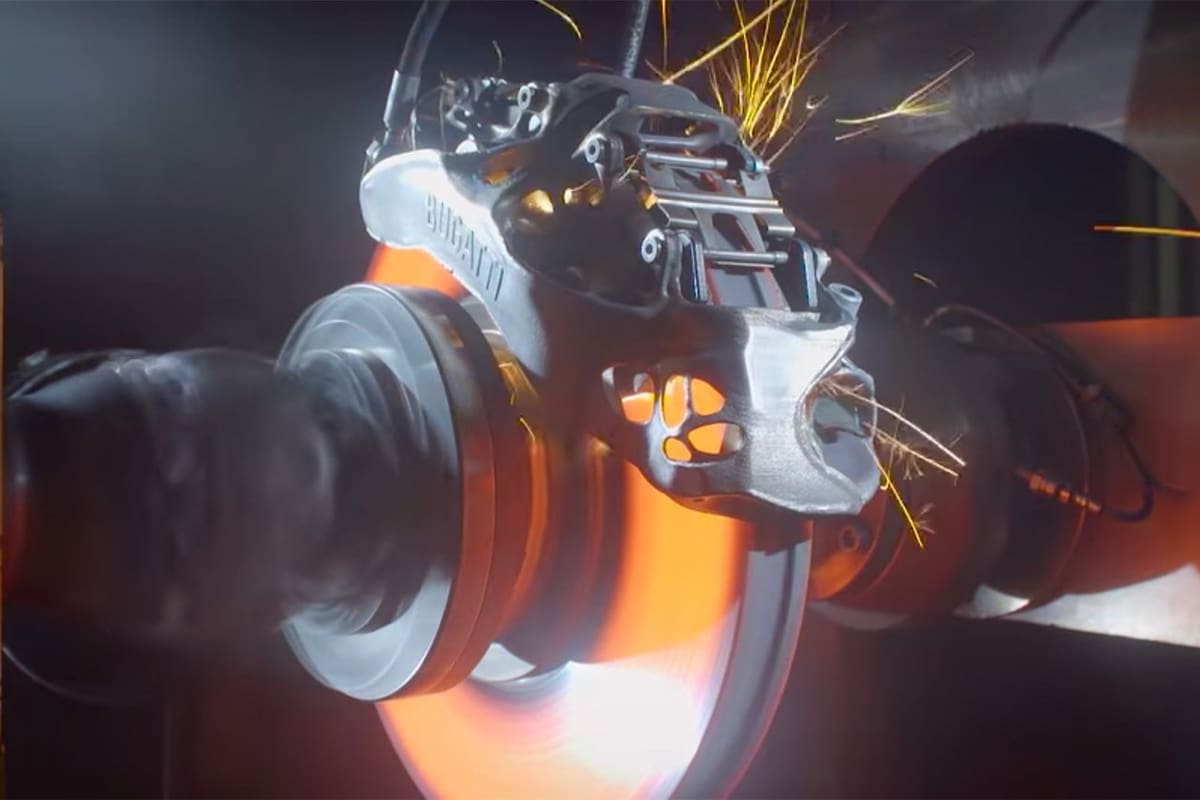
The world’s biggest titanium 3D printed part is Bugatti’s amazing brake caliper for the Chiron hypercar. Bugatti claims the 3D printed caliper is 40% stronger than a regular caliper currently fitted to all Chiron models. While it took 45 hours to produce, the rather low volume production Bugatti runs makes 3D printing is a suitable solution.
Bugatti designed the caliper so that it can be produced with as little material as possible while providing better structural strength than the regular caliper. Thanks to its clever design, the 3D printed caliper saves 2 kg over the standard one.
Being an exclusive manufacturer, it’s natural Bugatti has the funds to experiment with projects like this. Because Bugatti is a part of the VW Group, the technology they develop now could eventually make its way into the products of other companies inside the VW Group.
BMW's 3D Printing Applications
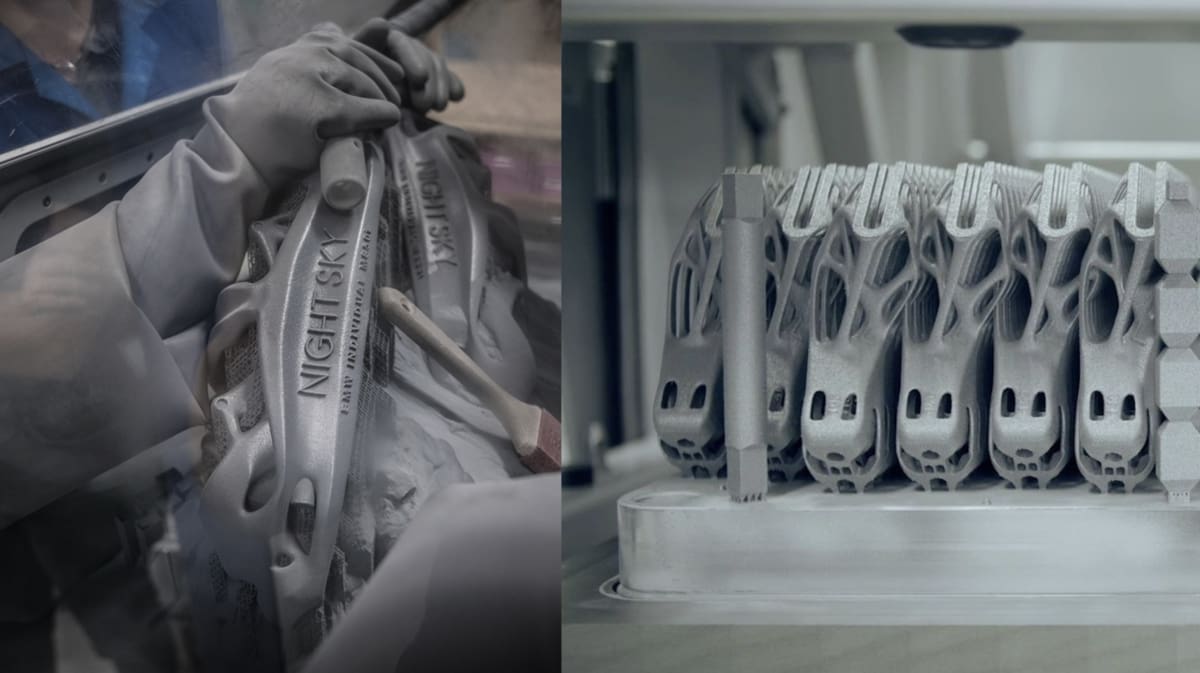
BMW started to experiment with 3D printing a few years back, and since then lots of progress has been made. In fact, these days BMW is producing end-use parts on metal 3D printers.
BMW’s top of the range car, the BMW i8 Roadster, features a folding roof mechanism for which brackets are made on metal 3D printers in large quantities. The bracket features a very specific shape and is complicated to produce using traditional techniques, which is why BMW opted for 3D printing.
Another great example of the company’s use of 3D printing technology are the brakes of the new BMW M850i Coupe Night Sky Edition. The entire brake caliper was printed on a metal 3D printer, featuring aesthetic details like the Night Sky branding on the caliper’s visible side.
HRE: World's First 3D Printed Wheels
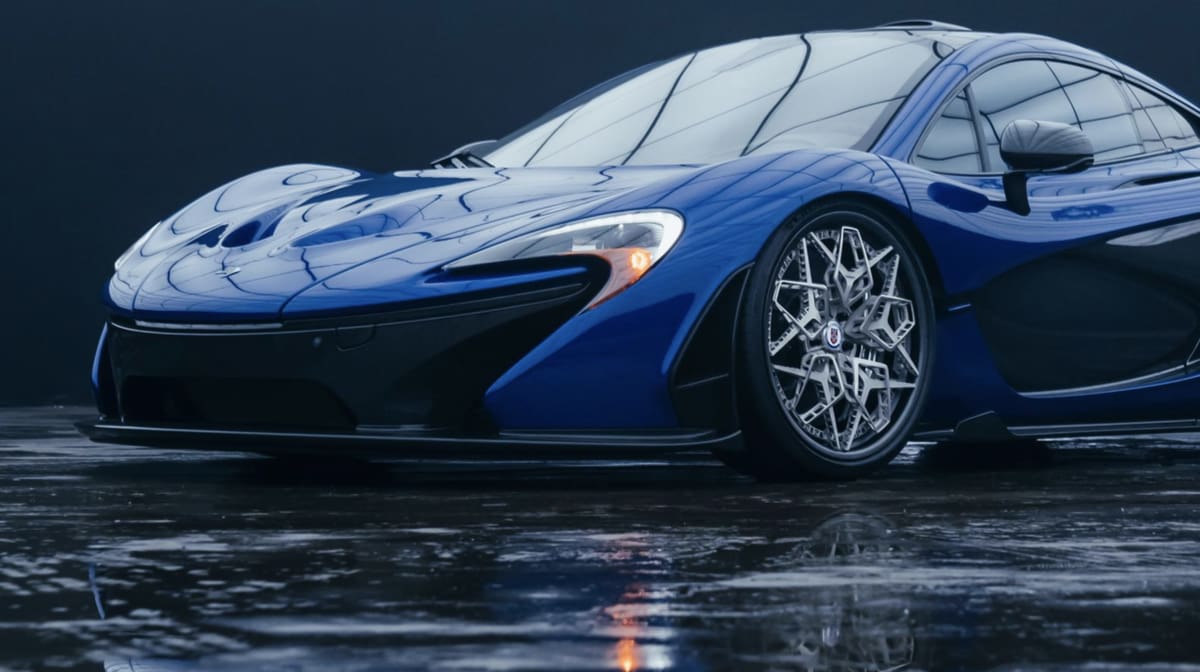
HRE Wheels specializes in the production of high-end wheels. Recently the company attracted lots of media attention thanks to the HRE3D+ 3D printed wheels project.
HRE Wheels partnered with GE Additive to get the access to high performance industrial 3D printers. The HRE3D+ 3D printed wheel consists of a centrepiece, 5 spokes, titanium fasteners for fitting the spokes to the centrepiece, and a carbon fibre rim.
What 3D printing brings into wheel production is the reduction of material waste and the ability to seamlessly produce very complex, fancy shapes. At HRE it replaces CNC milling, which generates a significant amount of waste from carving the wheel out of an aluminium block. Whereas 3D printing uses material only where it’s needed, leaving almost no waste material.
Although 3D printing wheels is an expensive process as of now, in the long run the automotive sector could experience many benefits the technology brings into the wheel production.
Ford's Jigs and Fixtures For The Production Line
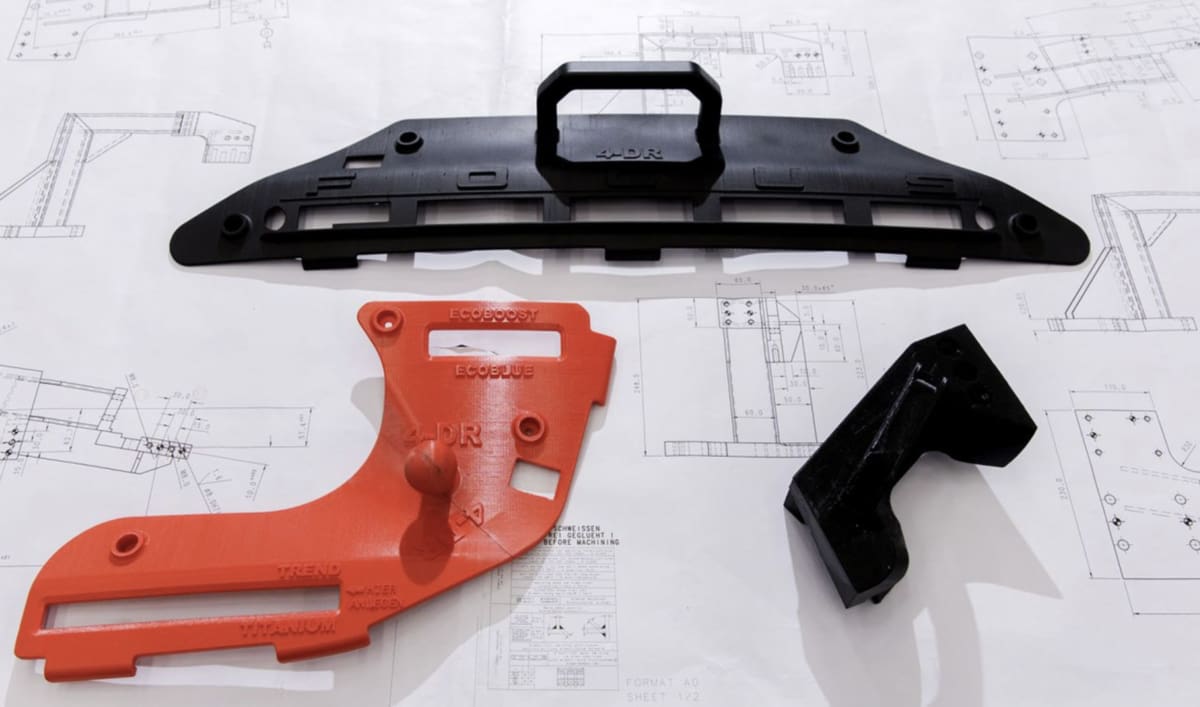
Jigs and fixtures are common tools on the car manufacturer’s production line, mostly used for positioning the badges. Most manufacturers order those tools to be produced by an outsourcer company. That takes more time and is less cost-efficient in comparison with 3D printing.
Since the jigs and fixtures are made out of plastic and usually don’t feature very complex shapes, it’s possible to make them on professional desktop FDM 3D printers, like Ultimakers. Ford took advantage of this technology by 3D printing jigs and fixtures for the new Ford Focus.
Last year, Volkswagen Autoeuropa saved more than $200,000 thanks to switching the production of jigs & fixtures from outsourcers to 3D printing.
Volkswagen's Race-Car Development
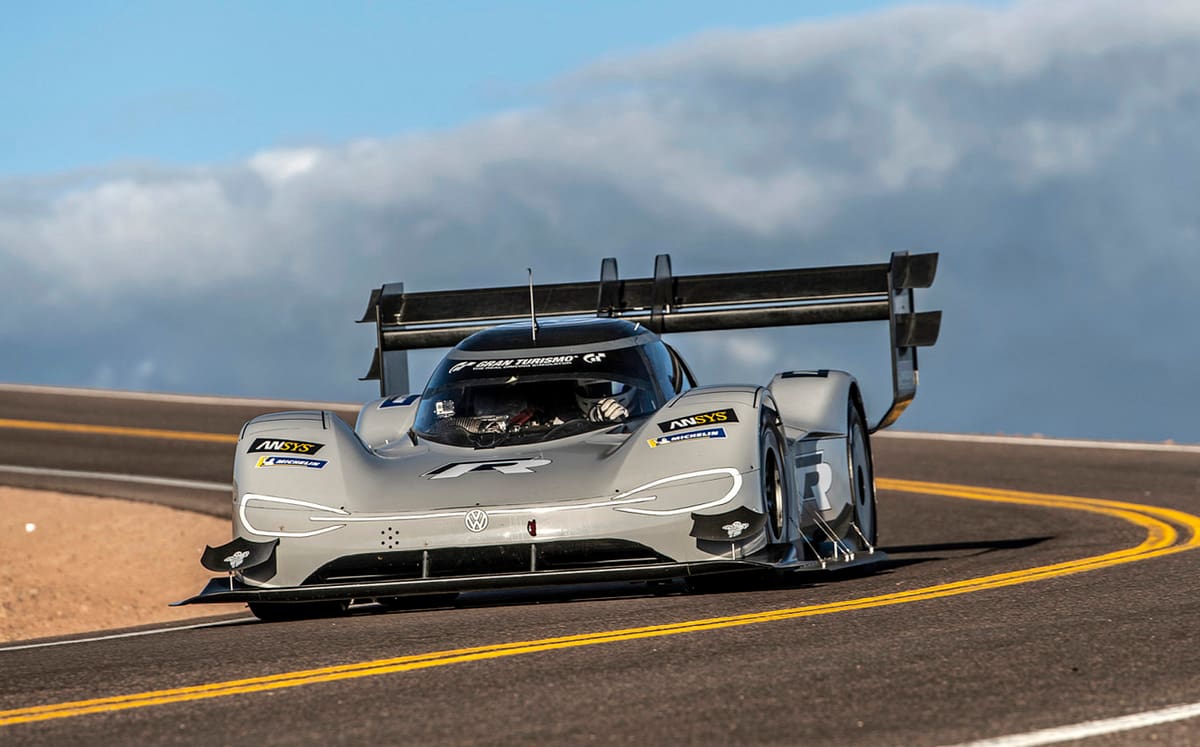
Last year, Volkswagen competed in the Pikes Peak International Hill Climb race with its purposely built VW I.D. R Pikes Peak electric racecar. The development of the I.D. R is a perfect example of how 3D printing makes prototyping easier and faster.
The I.D. R is a fully electric race car powered by two electric motors which produce 680 hp, which is enough to launch the car from 0-60 mph in 2.25 seconds. It is also very lightweight, weighing under 2,500 pounds, driver included.
During the short time available for the development of the I.D. R, Volkswagen 3D printed more than 2,000 parts. This saved lots of time and money.
The success of this technique was proven when the I.D. R set the new record at the 20 km long hill climb course with 156 corners. Romain Dumas set the new record at 7:57:148. The previous record was 8:13.878 and was made by Sébastien Loeb in a Peugeot 208 T16.
The David Bowie 3D Printed Tribute Concept Car
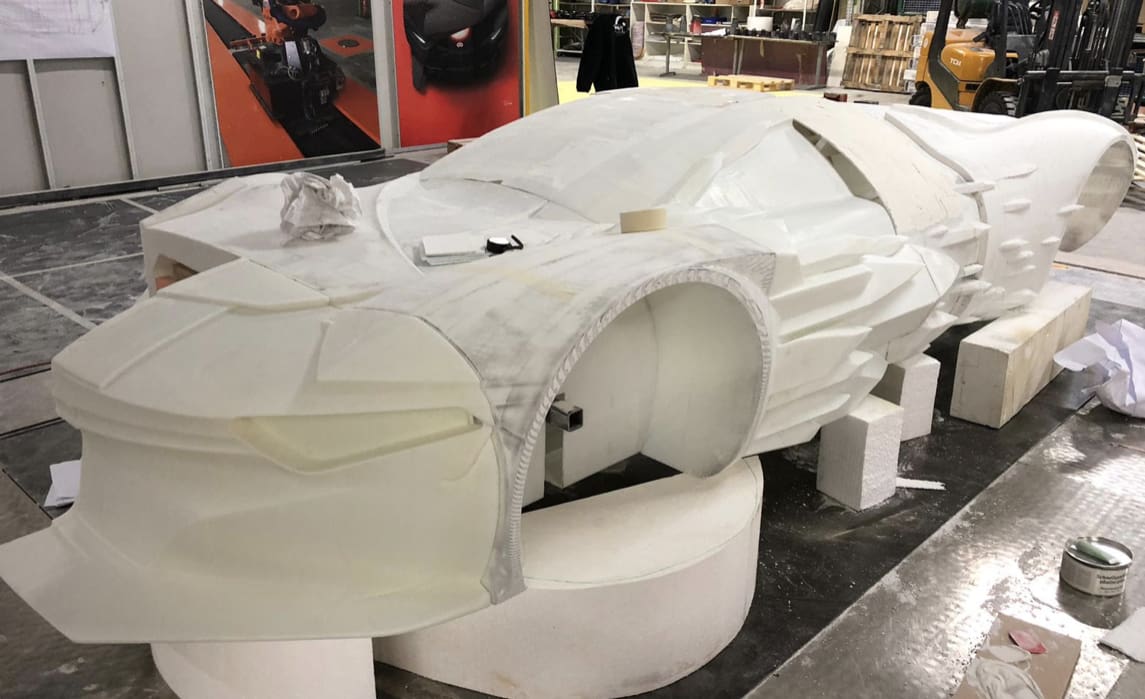
This is an entirely 3D printed, full-scale concept car created in tribute to musical icon David Bowie.
Behind the design of this unique concept stands Takumi Yamamoto, a famous designer with lots of experience of working on one-off concept hypercars. Yamamoto’s idea was to build a Bowie-inspired concept car which highlights the artist’s personality and work.
The full-scale concept was made by MASSIVit 3D and Marie 3D using the MASSIVit 1800 large format 3D printer.
Since the design features a ton of complex shapes, 3D printing came in as a perfect tool for the concept production. One of the goals for this project was to present the possibilities 3D printing gives to the automotive world during the Festival Automobile International in Paris, which ran from January 31 to February 3, 2019.
If you’d like to find out more, read our full article about David Bowie Tribute Car: A 3D Printing First.
Conclusion
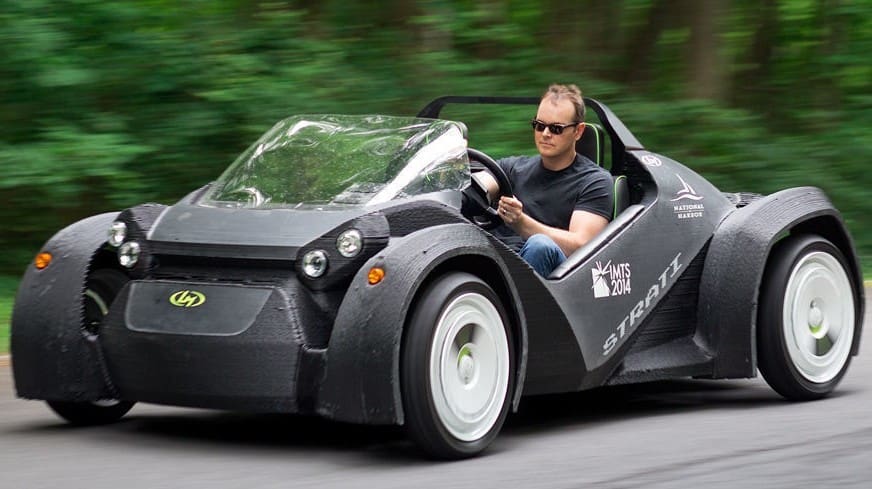
As of now, 3D printing in the automotive industry is mostly used as a rapid prototyping tool or for producing end-use parts. In our relatively near future, we might see more and more cars with 3D printed parts.
Manufacturers enjoy the cost-cutting benefits 3D printing provides when it comes to developing parts, but are also seeking towards 3D printing end-use parts.
Besides 3D printing parts, entire cars have already been 3D printed. The technology is not anywhere near ready to replace the current process of producing vehicles but has the potential to do so in the future.
If you fancy reading more about 3D printed cars, take a look at our list of the 10 Coolest 3D Printed Cars.
License: The text of "3D Printing Automotive Applications – The Latest Projects" by All3DP Pro is licensed under a Creative Commons Attribution 4.0 International License.